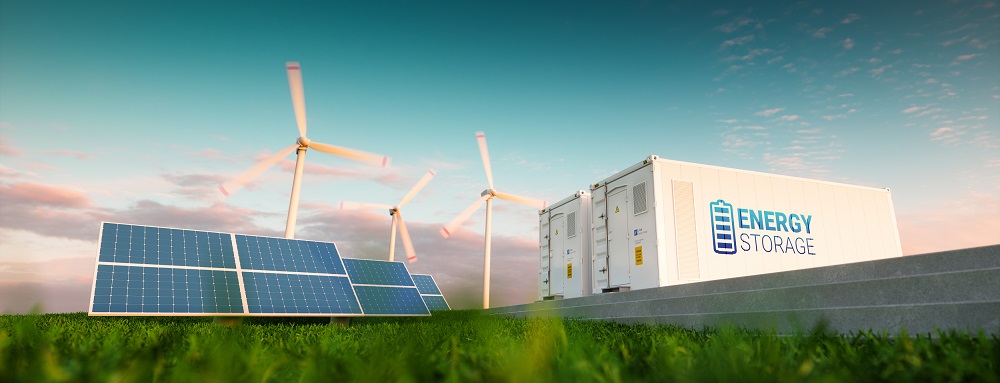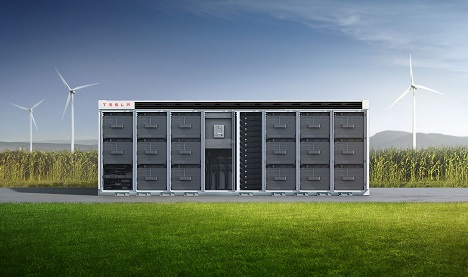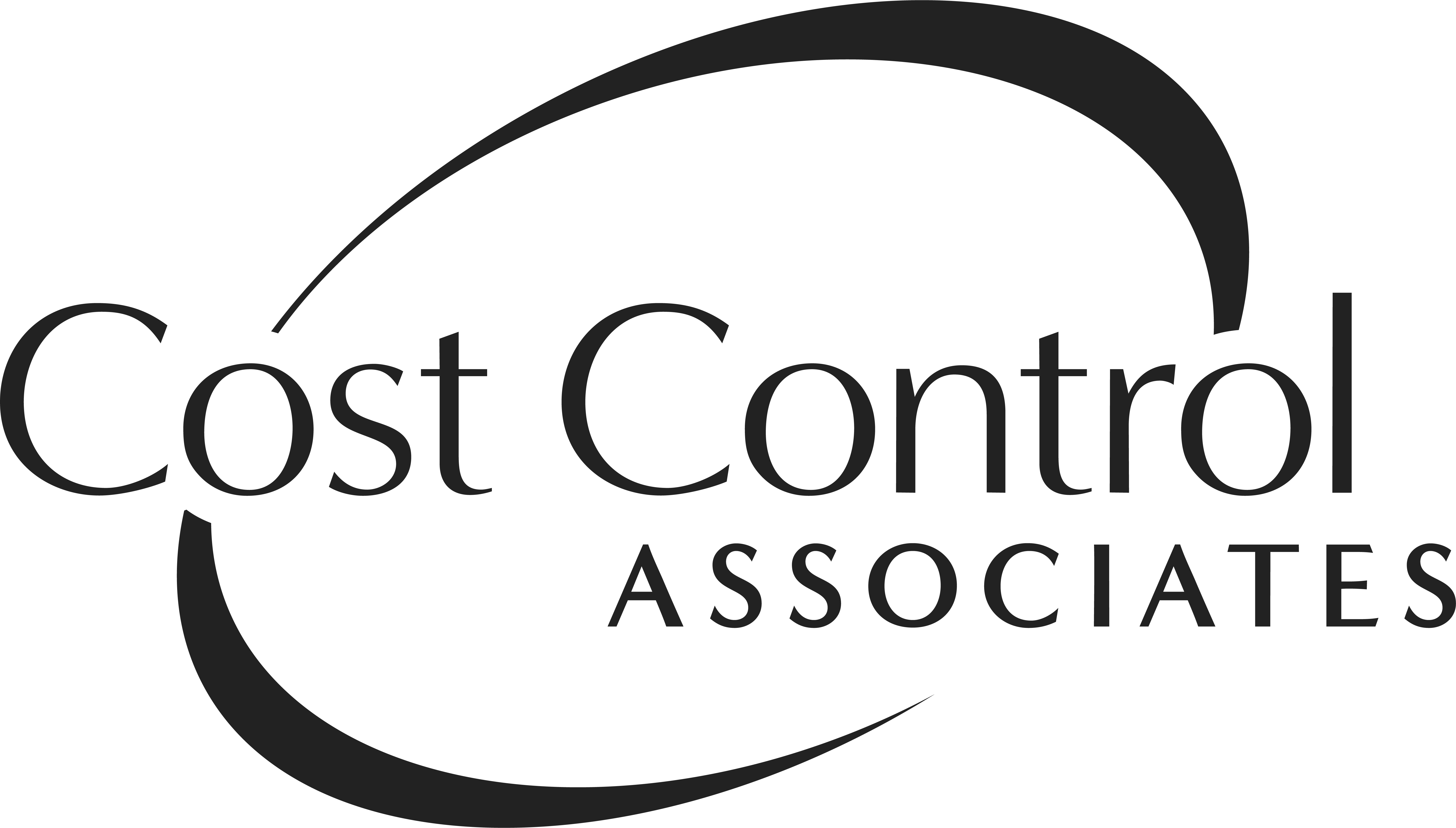Energy Storage Heats Up Amidst Race to Reach Net Zero Goals

In April President Biden announced new targets for the U.S. to achieve a 50-52 percent reduction (from 2005 levels) in net greenhouse gas pollution by 2030. The U.S. also plans to achieve 100 percent carbon-pollution-free electricity by 2035 and net zero emissions by 2050. (Net zero means the U.S. would eliminate as much greenhouse gas as it emits.)
We cannot reach these goals without a vast expansion of renewable resources such as wind and solar. The International Energy Agency (IEA) reported that renewable energy made up 90 percent of growth in the power sector in 2020, the largest growth spurt in renewable electricity production since 1999. The organization expects to see 90 percent growth again in 2021 and 2022.
Developing technologies will deliver bigger wind turbines, more effective photovoltaic-cell installations and versatile options for siting them on rough terrains or steep inclines. More work is needed to bring powerplants closer to energy sources so that cities across the country can benefit from cleaner energy.
Energy Storage Battery Solutions: Lithium Ion and Vanadium Flow
All eyes are on energy storage as the primary solution to make renewable energy work for more people. “Advancements in batteries, along with an improved regulatory environment and more investment could make this decade the Roaring ’20s for energy storage,” wrote Darrell Proctor, associate editor for Power magazine. “Whether energy storage comes from batteries, thermal systems, mechanical storage, hydrogen production or pumped hydropower, it is critical to the advancement of the power sector.”
When people talk about energy storage, most think of batteries. In the race to build the better battery, solutions range from lithium-ion and vanadium flow batteries to thermal batteries and compressed air storage. Fuel cells and green hydrogen are also making inroads. Currently the top battery solutions are the lithium-ion and vanadium flow battery solutions. Let’s take a closer look at each.
Lithium Ion Batteries (Li-ion)
Lithium ion batteries have high energy density (energy stored in proportion to weight). Their lighter weight makes them a good choice for electronics, automobiles and other transportation. Because high energy density increases the risks of overheating, these batteries are fire-prone and may require additional fire suppressant and prevention measures.
As stationery batteries that are part of a larger installation, Li-ion batteries are spaced a safe distance from each other and require a larger footprint. Li-ion batteries reach their rate power quickly and are more effective for shorter, infrequent runs of power. They do not last forever and will deliver less and less power over their 10-20 year lifetime.
 Recent installations include Apple’s construction of a 240 megawatt-hour battery project at its northern California solar farm. The installation will help power Apple’s corporate headquarters with 85 Tesla Li-ion megapacks that will store energy generated by the farm’s 130-megawatt solar array. In Texas, where heavy February rains left millions without power, a secretive storage project is underway adjacent to the Texas-New Mexico Power substation belonging to the Electric Reliability Council of Texas (ERCOT). Though still under wraps, it appears that Tesla is building a 100+ megawatt energy storage project there.
Recent installations include Apple’s construction of a 240 megawatt-hour battery project at its northern California solar farm. The installation will help power Apple’s corporate headquarters with 85 Tesla Li-ion megapacks that will store energy generated by the farm’s 130-megawatt solar array. In Texas, where heavy February rains left millions without power, a secretive storage project is underway adjacent to the Texas-New Mexico Power substation belonging to the Electric Reliability Council of Texas (ERCOT). Though still under wraps, it appears that Tesla is building a 100+ megawatt energy storage project there.
Vanadium Flow Batteries (VFB)
The vanadium flow battery is the newer addition to energy storage choices and offers several advantages over the Li-ion battery. This battery is dependable and safe. It is non-flammable and uses 100% of the energy stored. The battery produces electricity by passing a vanadium liquid solution back and forth through an inner membrane. These batteries don’t wear out, but the membrane needs replacement every 10-20 years.
VFBs take more time to reach peak running power but can produce power day in and day out without performance loss. VFBs are more expensive, but costs are expected to decrease over time. VFBs have lower energy density, so you need to use more batteries to reach the same capacity as the Li-ion battery. They can move electricity without generating heat. With no danger of fire, they can be packed closer together into a smaller footprint. Because VFBs are heavy, they are better suited to stationary applications.
 Vanadium flow batteries are gaining traction, but to date, most installations are in Europe and Australia where they are lauded for their safety, scalability, long life and reliability. Early installations include a 270-year-old dairy farm in the Netherlands. The Borgmann farm uses large quantities of electricity to run its robotic milking machines and other electricity-powered devices. Solar cells mounted on broad dairy barn roofs do the job on sunny days, but it is VFB energy storage that fills in on gloomy days. Their VFB, about the size of a small sea container, collects energy from the 50 kilowatt-hour solar array and allows the farm to run full-time and exclusively on renewable electricity.
Vanadium flow batteries are gaining traction, but to date, most installations are in Europe and Australia where they are lauded for their safety, scalability, long life and reliability. Early installations include a 270-year-old dairy farm in the Netherlands. The Borgmann farm uses large quantities of electricity to run its robotic milking machines and other electricity-powered devices. Solar cells mounted on broad dairy barn roofs do the job on sunny days, but it is VFB energy storage that fills in on gloomy days. Their VFB, about the size of a small sea container, collects energy from the 50 kilowatt-hour solar array and allows the farm to run full-time and exclusively on renewable electricity.
Batteries are Not the Only Solution
The increasing availability of energy storage solutions strengthens the national grid by making it more reliable with less brown-outs and outages. Storage provides renewable energy during times when natural resources such as sun and wind are unavailable. While energy storage is still pricey per kilowatt hour, it delivers benefits that keep down other costs.
Energy storage solutions of all types will help power-providers balance and switch generation equipment during peak times to save on wear and tear, gas emissions, costs and deliverability. Storage makes it easier to use renewable energy, and the added capacity can delay the need to build more power plants, transmission and distribution infrastructure. But batteries are not the only solution.
Looking Forward
“There is no one winner,” said Adarsh Nagarajan, the group manager for Power System Design and Planning at the USDOE’s National Renewable Energy Laboratory (NREL) in Colorado. “All of them [energy storage solutions] should work together in order to achieve a certain goal, which is grid stability and resilience and to fulfill customer needs.”
The renewable energy market is still in the early stages of development. As prices come down and successful solutions are unveiled, the increased interest will support financial investment in the renewable energy storage solutions market. Challenges related to scale, cost reduction and bankability need to be sorted out.
The more the market grows, so will ancillary services such as software and cyber-security. Hardware and software development will expand as power suppliers build extensive, time-sensitive networks to coordinate the flow of energy from the various available resources based on present and future demand. Pricing will become a delicate balancing act dependent on usage, storage, on-and-off peak times, geography and more. Increased cyber-security technologies are imperative to keep it all safe.
It’s an exciting time for renewable energy and energy storage. Businesses looking to improve their sustainability measures or pursuit of net-zero goals must prepare themselves for the new energy marketplace. It is important to fully understand your energy usage, now and with an eye on the future. When it comes to data management and energy procurement, you have options. Being knowledgeable about the changing energy marketplace is vital to your business success.

Brandon Sisson is vice president of energy sales at Cost Control Associates. His energy management experience includes regulated rate review, strategic energy sourcing, utility bill processing and demand-side energy efficiency/sustainability initiatives. Brandon has assisted Global 1000 customers with energy spend optimization across a broad spectrum of industries. Prior to joining Cost Control Associates, he held energy-focused leadership roles for Accenture, Insight Sourcing Group and Procurian.
